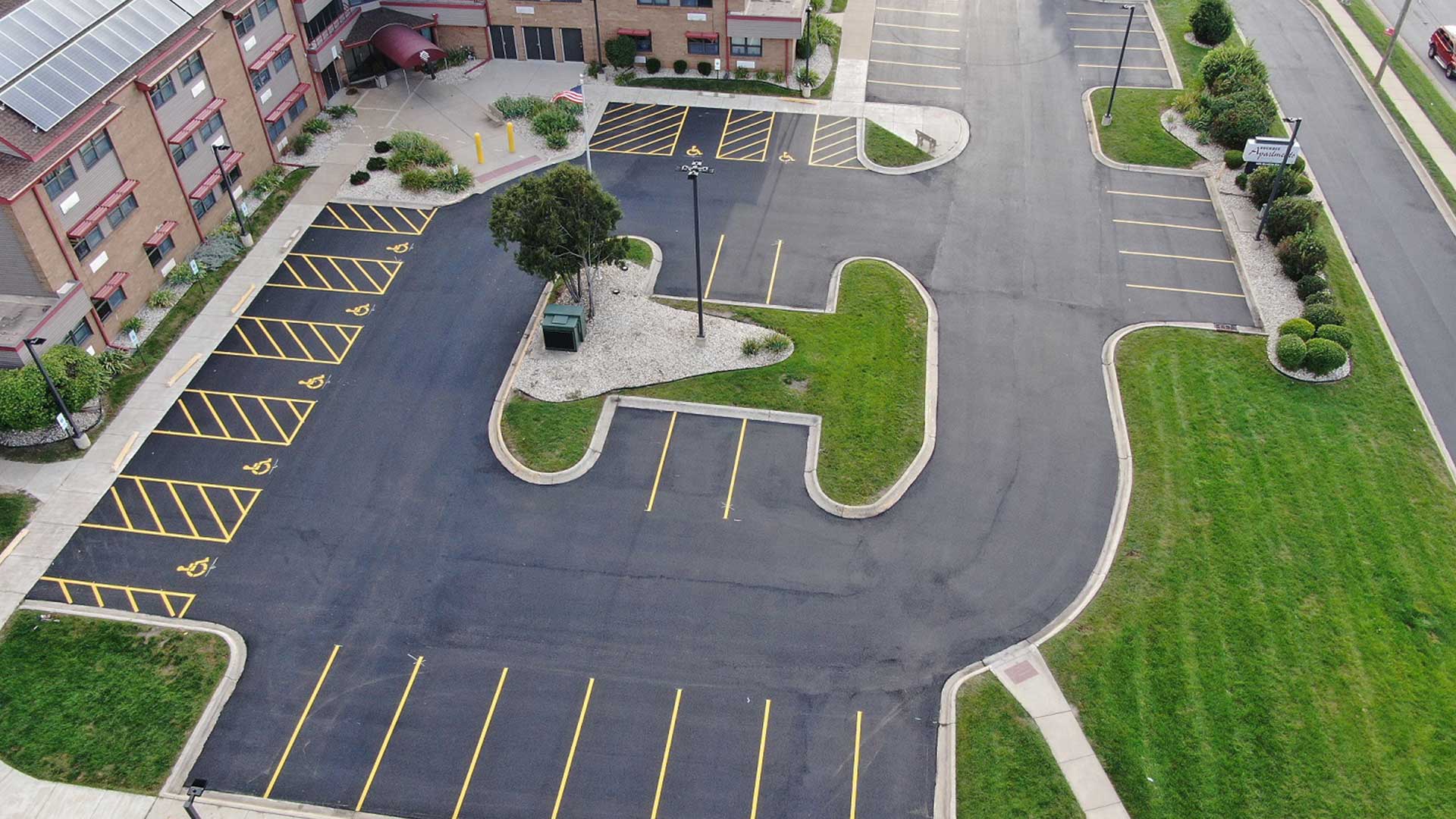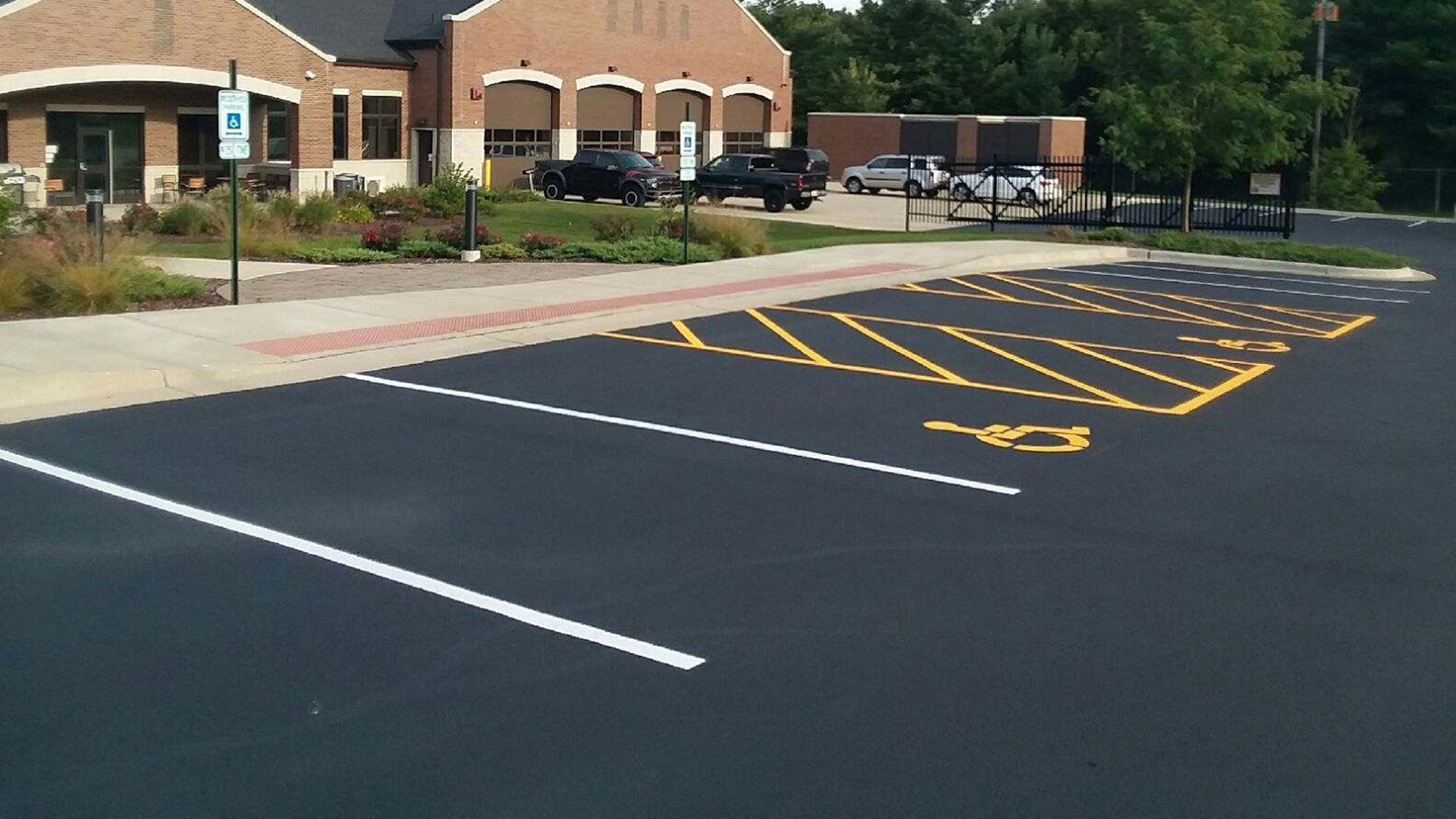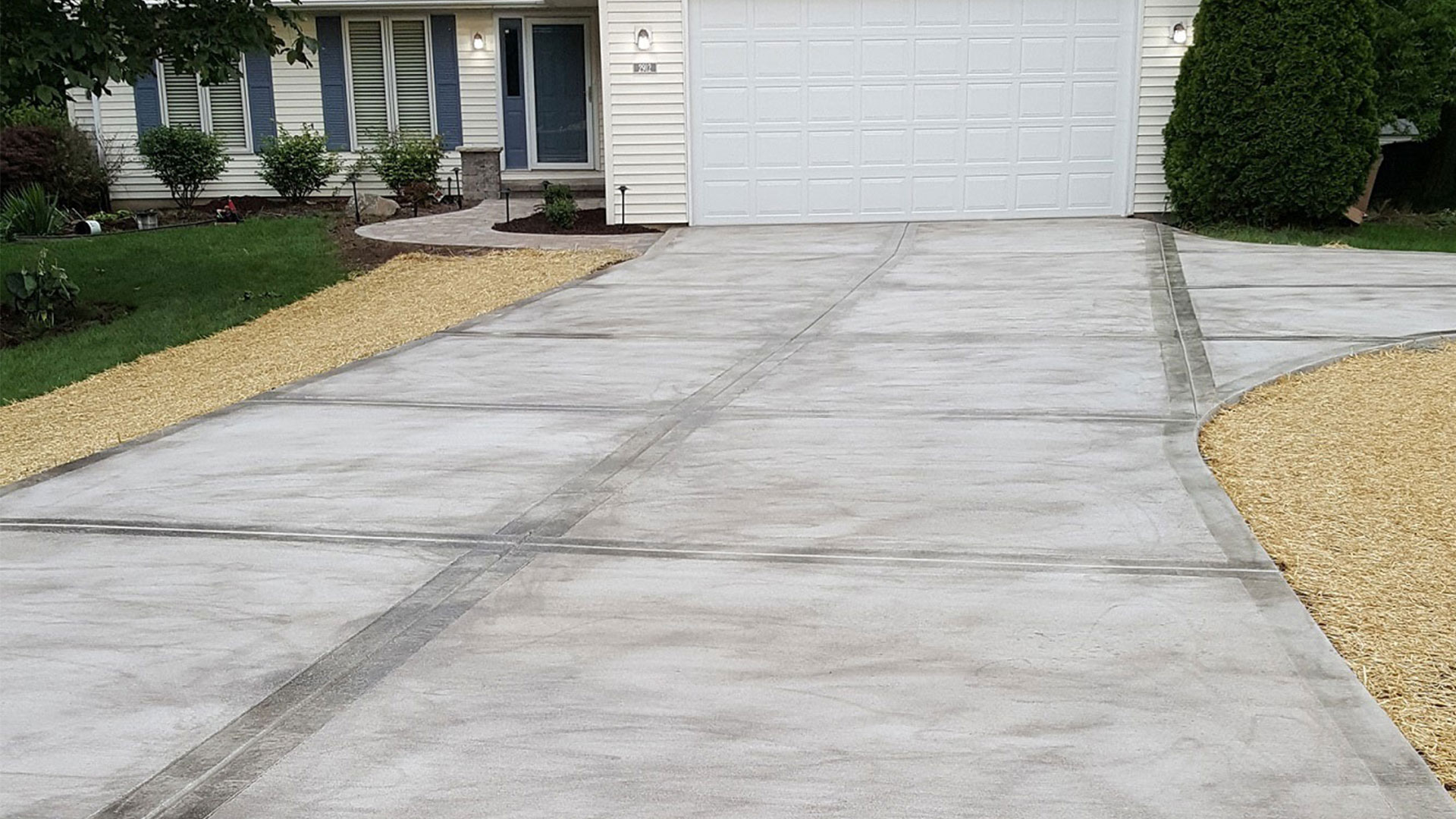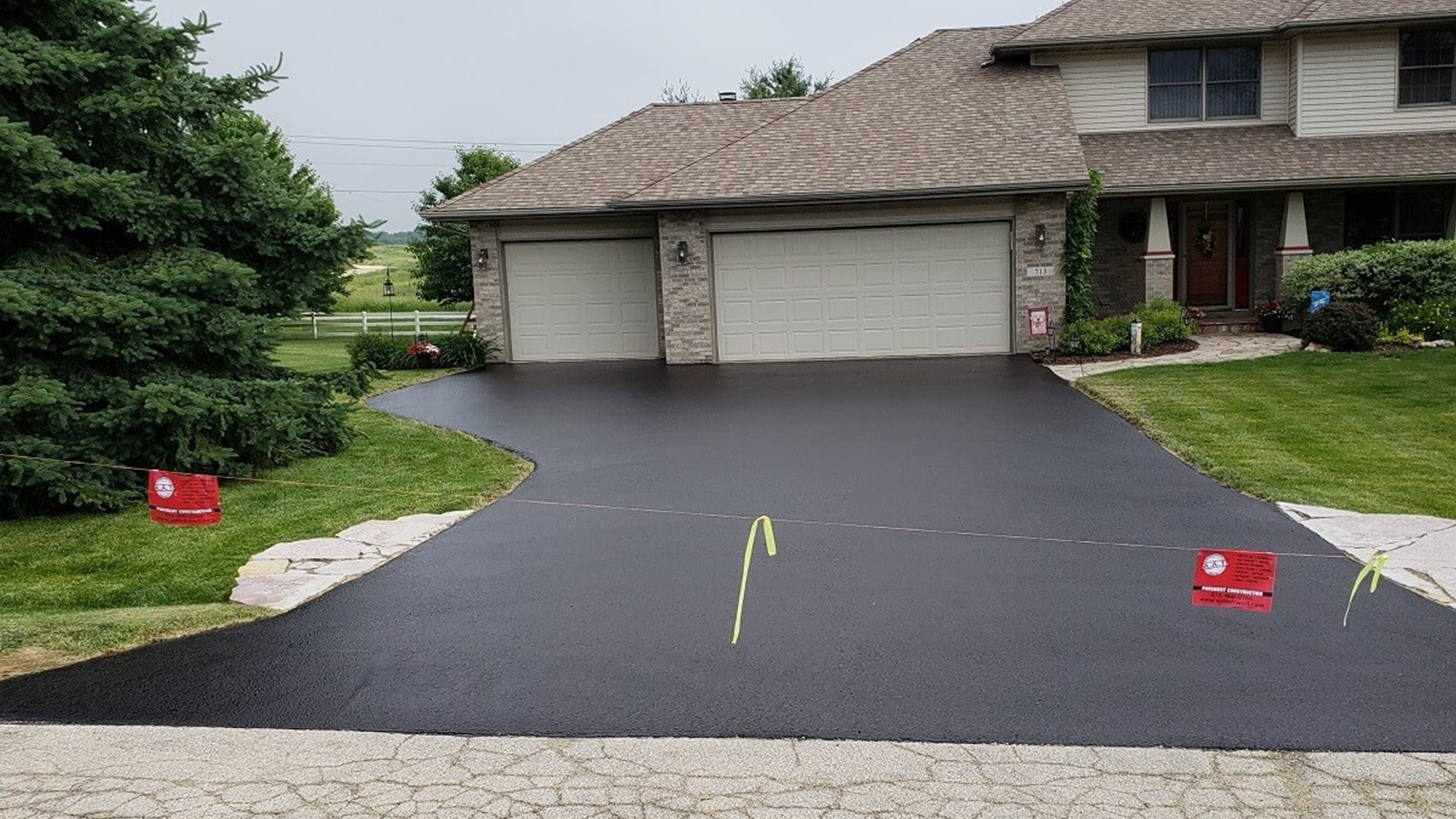Pavement Construction for Rockford, Loves Park, Belvidere
A.A.T. Infrared Inc., we are leading paving contractors offering pavement construction to Rockford and the surrounding areas. With many years of experience, we have the skill and equipment to handle pavement jobs of various scopes and complexities. From parking lots to sidewalks to driveways, we aim to get the job done efficiently, without taking any shortcuts that could jeopardize quality or safety. Below we’ve provided basic information about pavement construction. If you would like to know more about any aspects of the job, including asphalt crack repair, asphalt sealcoating and asphalt maintenance, we invite you to give us a call.
What is asphalt?
Asphalt is comprised of crushed rock, sand, gravel and asphalt cement, which is heated and placed in storage silos prior to application.
Why does asphalt fail?
There are a variety of reasons why asphalt might fail, including inadequate thickness, unstable sub-grade components and improper maintenance. If you have noticed cracks and deterioration on your asphalt surface it could because water has penetrated to the aggregate base. If this is the case, then there may be a chance that the surface is beyond repair, and new pavement construction is necessary.
How long will my parking lot last?
There are many factors that affect the lifespan of your new parking lot, such as weather conditions, the amount of traffic, amount of sunlight hitting the surface and the geographical location. With proper maintenance and a quality sealer, a parking lot can last for up to 15 years.
How long do I have to wait to use my parking lot?
After the asphalt has been installed, we recommend waiting at least 24 hours before using your parking lot to allow the seal coating to properly cure.
Can you pave in the rain?
For optimal results, we do not recommend paving in the rain. This is because asphalt will not be able to properly bond together with heavy moisture in the air.
Do you provide line striping?
After the completion of pavement construction, we can provide line striping services to make your parking lot safe for motorists and pedestrians. All lines are painted in yellow or white paint to provide adequate contrast and are completed to industry standards and regulations.
Get in touch with us
If you are looking for pavement construction in Rockford then look no further. A.A.T. Infrared Inc., we are here to meet your needs. As a leading pavement construction company, we are committed to proving you with the highest level of service, delivered on schedule and within budget. We take what we do very seriously, and hold our reputation in the highest regard. That said, we know that we are only as good as our last job.
Get in touch with us today to start planning your new pavement construction project, and get a free quote. We are looking forward to working with you.
Pavement construction involves the process of building a durable and stable surface or road on the ground to provide a smooth and safe transportation route for vehicles and pedestrians. Pavements are essential infrastructure components in urban and rural areas, and their construction can vary depending on the type of pavement (e.g., roads, sidewalks, driveways, parking lots) and the specific requirements of the project. Here is an overview of the general steps involved in pavement construction:
- Planning and Design:
- The first step in pavement construction is thorough planning and design. Engineers and architects assess the site's conditions, traffic volume, and intended use to determine the appropriate pavement type, thickness, and design specifications.
- They also consider factors such as drainage, environmental impact, and local regulations.
- Site Preparation:
- Before construction begins, the construction site is prepared. This involves clearing the area of any existing structures, vegetation, and debris.
- Grading and leveling are performed to establish the desired slope and alignment for proper drainage.
- Subgrade Preparation:
- The subgrade is the natural soil or aggregate layer upon which the pavement will be constructed. It must be properly prepared to provide a stable foundation.
- Compaction and stabilization techniques may be used to achieve the desired subgrade strength and uniformity.
- Base Course Installation (if required):
- In some cases, a base course of aggregate or asphalt may be placed on top of the subgrade to provide additional support and drainage.
- The base course is typically compacted to ensure stability.
- Pavement Material Selection:
- Depending on the project's specifications, the choice of pavement material may vary. Common materials include asphalt (hot mix asphalt or asphalt concrete) and concrete.
- For asphalt pavements, a mix design is prepared, which includes the right proportions of aggregates, binder, and additives.
- Pavement Construction:
- For asphalt pavements, the hot mix is transported to the construction site and laid on the prepared subgrade or base course. It is then compacted to achieve the desired density and smoothness.
- For concrete pavements, the concrete is mixed and poured into forms that define the shape and thickness of the pavement. The concrete is then finished to provide a smooth surface.
- Curing:
- In the case of concrete pavements, curing is a crucial step. It involves keeping the concrete moist and at the proper temperature for an extended period to ensure proper hydration and strength development.
- Surface Finishing:
- The final surface of the pavement is finished to the desired texture and smoothness, ensuring safe and comfortable driving or walking conditions.
- Markings and Signage:
- Road markings, lane striping, and signage are added to guide traffic safely and efficiently.
- Quality Control and Inspection:
- Throughout the construction process, quality control and inspection are essential to ensure that the pavement meets the design specifications and safety standards.
- Maintenance and Long-Term Care:
- After construction, regular maintenance and repair are crucial to extend the pavement's lifespan and ensure continued safety and functionality.
Pavement construction is a complex process that requires careful planning, skilled labor, and adherence to industry standards to create durable and safe transportation surfaces. Properly constructed pavements contribute significantly to the overall infrastructure and transportation network of a region.




